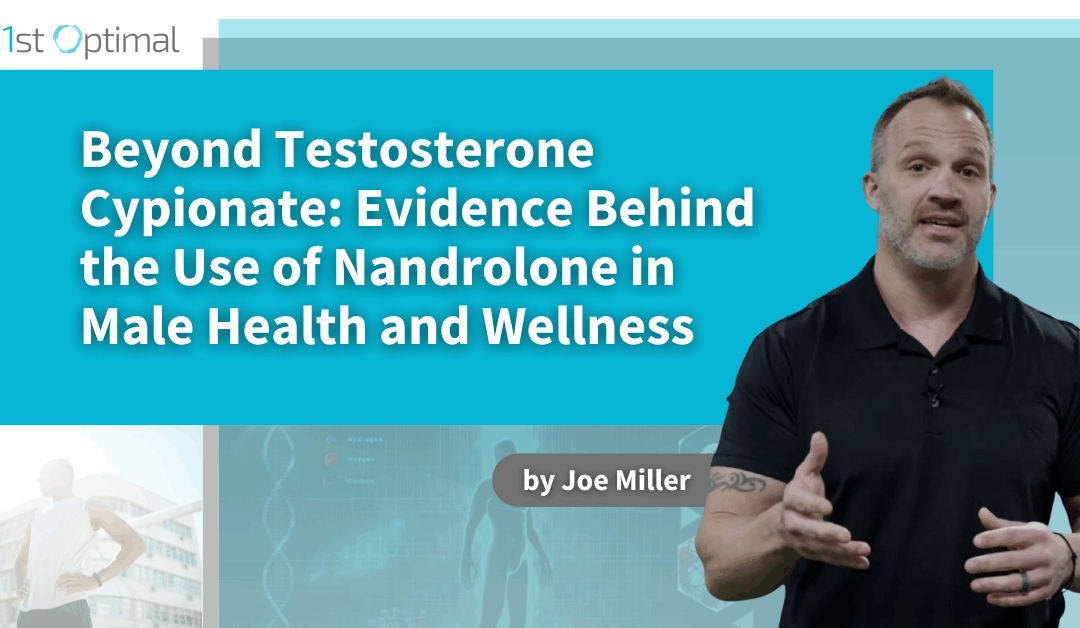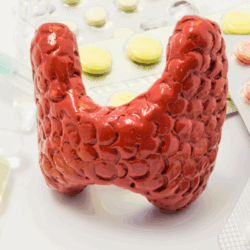Introduction
Hypogonadism, a condition characterized by low testosterone levels and its associated symptoms, is a prevalent issue among men. The primary treatment for hypogonadism has traditionally been testosterone supplementation therapy (TST). However, there has been growing interest in exploring alternatives to testosterone, particularly nandrolone—a synthetic anabolic steroid known for its potential benefits in muscle growth, joint healing, and overall male health.
While nandrolone (also known as Deca-Durabolin) is often overshadowed by testosterone therapies, emerging research is shedding light on its significant therapeutic potential. This article delves into the pharmacology of nandrolone and its clinical applications, particularly for hypogonadal men, exploring its benefits, mechanisms of action, and potential risks.
Understanding Nandrolone and Its Mechanisms
Nandrolone, also known as 19-nortestosterone, is a synthetic anabolic steroid that structurally resembles testosterone but with significant differences in its anabolic (muscle-building) and androgenic (masculinizing) properties. The key difference is that nandrolone has a higher anabolic-to-androgenic ratio compared to testosterone, making it particularly effective for enhancing muscle mass without the strong androgenic effects (e.g., prostate enlargement, hair loss).
Nandrolone’s Mechanisms of Action:
- Binding to Androgen Receptors: Nandrolone binds to androgen receptors with higher affinity than testosterone, promoting muscle growth while having minimal androgenic effects, such as virilization.
- Reduced Conversion to DHT: Unlike testosterone, nandrolone is not converted to dihydrotestosterone (DHT), a potent androgen associated with side effects like hair loss and prostate enlargement. Instead, it is converted into 5α-dihydro-19-nortestosterone, a metabolite with significantly lower androgenic activity.
- Impact on Bone Health: Nandrolone has been shown to increase bone density and improve bone mineralization, making it beneficial for conditions like osteoporosis and joint degeneration.
Recent Research:
- According to studies, nandrolone has shown increased bone density and helped prevent bone fractures in osteoporotic patients, with similar effects seen in men with hypogonadism (low testosterone levels). This makes nandrolone a potential adjunct for bone health alongside muscle mass therapy.
These properties make nandrolone a valuable alternative for treating hypogonadal men with additional benefits like enhanced muscle mass and joint healing.
Clinical Uses of Nandrolone in Male Health
The use of nandrolone in male health has been explored in various clinical settings, especially for its potential to address multiple conditions that go beyond traditional testosterone therapy.
Hypogonadism and Nandrolone:
- Alternative to Testosterone Replacement: For men suffering from hypogonadism (low testosterone), nandrolone can serve as a testosterone-sparing agent, offering similar benefits in terms of muscle mass and strength without the risks associated with testosterone-induced hair loss or prostate growth.
- Better Muscle Growth: Nandrolone’s higher anabolic-to-androgenic ratio makes it effective in building muscle mass, particularly in men with low testosterone levels who struggle with muscle wasting.
Joint Healing and Muscle Wasting:
- Post-Surgical Recovery: Nandrolone has shown promise in enhancing joint healing after surgeries such as rotator cuff repairs. Its anabolic properties stimulate collagen formation, crucial for soft tissue regeneration.
- Muscle Wasting in Chronic Conditions: Nandrolone has been investigated as a therapeutic option for muscle wasting in patients with HIV and chronic kidney disease. It helps combat cachexia (muscle loss), increasing lean body mass and muscle strength.
Latest Research Findings:
- Studies show that nandrolone therapy can help men with chronic conditions like hemodialysis or HIV-related muscle wasting regain strength and lean mass, promoting recovery and improving quality of life.
Nandrolone for Joint Healing and Muscle Growth
The anabolic properties of nandrolone have garnered attention for their potential to support muscle growth and joint healing, particularly after tendon injuries or joint surgeries.
Research on Joint Healing:
- Rotator Cuff Repair: Nandrolone has been used experimentally in animal models for rotator cuff healing. Studies show that nandrolone reduces fatty infiltration in injured muscles and promotes the regeneration of tendons, leading to better functional recovery.
- Post-Surgery Recovery: Nandrolone has been used in human studies for bone and tendon repair after surgeries, with significant improvements in muscle function and joint mobility.
Impact on Muscle Growth:
- Increase in Lean Mass: Nandrolone’s myotrophic effect is particularly beneficial for men who suffer from muscle wasting, increasing muscle mass while decreasing fat. For hypogonadal men, this can significantly improve body composition and overall physical function.
- Muscle Regeneration in Chronic Disease: Studies have shown that nandrolone decanoate can be used to treat anorexia, cachexia, and muscle wasting caused by HIV, with improvements in muscle mass, strength, and quality of life.
Nandrolone and Erectile Dysfunction
One concern with testosterone therapy is the potential for erectile dysfunction (ED) due to the conversion of testosterone to DHT. Nandrolone, however, does not convert to DHT, potentially reducing the risk of ED associated with DHT’s effects on erectile function.
Potential Benefits for ED:
- Minimal Impact on DHT: Nandrolone’s inability to convert to DHT may help men undergoing testosterone therapy avoid the sexual side effects associated with DHT, such as erectile dysfunction.
- Hormonal Balance: The balance between testosterone and estrogen is crucial for maintaining healthy erectile function. By reducing DHT levels, nandrolone could help preserve testosterone-to-estrogen ratios, potentially improving erectile function.
Additional Research on ED:
- Studies indicate that nandrolone’s reduced conversion to DHT might lead to improved sexual function in men experiencing testosterone-related erectile dysfunction. While more clinical studies are needed, nandrolone’s potential as an alternative to testosterone in ED management is promising.
Advantages of Nandrolone Over Testosterone Cypionate
While testosterone cypionate is widely used for hypogonadal men, nandrolone presents several unique advantages.
Key Advantages:
- Muscle Mass without DHT Side Effects: Nandrolone has a much higher anabolic-to-androgenic ratio compared to testosterone, meaning it promotes muscle growth without stimulating excess DHT.
- Reduced Risk of Hair Loss and Prostate Issues: Unlike testosterone, nandrolone’s reduced conversion to DHT makes it a safer option for men concerned about hair loss, prostate enlargement, and androgenic side effects.
- Improved Bone Health: Nandrolone has been shown to increase bone density, making it beneficial for men with osteoporosis or other bone-related conditions.
These benefits make nandrolone a potential adjunct therapy for male health, especially for those looking for alternatives to testosterone.
The Role of Nandrolone in Muscle Wasting and Anemia
In addition to its benefits for muscle growth, nandrolone is also valuable in treating conditions like muscle wasting and anemia.
Treatment for Muscle Wasting:
- Nandrolone has been used to treat anorexia, cachexia, and muscle wasting in patients with chronic conditions like HIV, hemodialysis, and chronic kidney disease. It helps stimulate muscle regeneration, making it a valuable tool in weight maintenance for patients dealing with muscle loss.
Potential Role in Anemia:
- Nandrolone also has hematopoietic (blood-forming) effects, increasing hemoglobin levels and improving oxygen transport. This property makes it useful in treating anemia, especially in patients undergoing hemodialysis or suffering from chronic illnesses.
Nandrolone and Alopecia: A Potential Solution
Alopecia (hair loss) is a common side effect of testosterone replacement therapy (TST) due to the conversion of testosterone to DHT. Since nandrolone does not convert to DHT, it could offer a potential solution for men concerned about hair thinning or pattern baldness.
How Nandrolone Helps:
By avoiding the conversion to DHT, nandrolone may significantly reduce the risk of androgenic alopecia (male pattern baldness) seen with other anabolic steroids and testosterone therapies.
Potential Risks and Considerations in Nandrolone Use
Despite its potential benefits, nandrolone carries certain risks and side effects that must be considered.
Risks:
- Erectile Dysfunction (ED): Although nandrolone may reduce the risk of ED compared to testosterone, it can still lead to testosterone suppression, which could cause sexual dysfunction in some men.
- Estrogen Conversion: Nandrolone can be converted to estrogens, which may lead to gynecomastia (breast enlargement) and unfavorable lipid profiles. Testosterone supplementation can help mitigate these effects.
- Hormonal Imbalance: As with all steroid treatments, hormonal imbalance can occur, requiring careful monitoring.
FAQs: Answers to Common Questions About Nandrolone
1. How does nandrolone work in the body?
Nandrolone works by binding to androgen receptors in muscle and bone tissues, promoting muscle growth and bone density while avoiding the androgenic side effects associated with testosterone.
2. Can nandrolone treat erectile dysfunction (ED)?
Nandrolone may help with erectile dysfunction by reducing the levels of DHT, which is known to contribute to erectile issues in men undergoing testosterone replacement therapy.
3. Is nandrolone a better option than testosterone for hypogonadism?
Nandrolone may offer advantages for hypogonadal men who are concerned about hair loss, prostate enlargement, or ED. It promotes muscle growth and bone health with fewer androgenic side effects.
4. Does nandrolone cause hair loss?
Since nandrolone does not convert to DHT, it is less likely to cause hair loss compared to testosterone therapy.
5. What are the risks of using nandrolone?
Risks include erectile dysfunction, hormonal imbalance, and the potential for estrogen conversion, which can lead to gynecomastia and lipid imbalances.
Conclusion: The Future of Nandrolone in Male Health
Nandrolone is emerging as a promising therapy for hypogonadal men looking for an alternative to traditional testosterone supplementation. Its unique properties, including a higher anabolic-to-androgenic ratio, make it a valuable tool for muscle growth, joint healing, and osteoporosis management. However, its use requires careful consideration of potential risks, including erectile dysfunction and estrogenic effects.
Further research is needed to fully explore the potential of nandrolone in male health and wellness. If you’re considering nandrolone therapy, it is essential to work with a healthcare provider who can help tailor the treatment to your individual needs and monitor your health throughout.
For more information on nandrolone therapy and hypogonadism treatment, visit 1stOptimal.com and consult with one of our licensed physicians.
Ready to optimize your muscle growth, joint health, and testosterone levels? Book a consultation with 1st Optimal today.
References & Citations:
- Pan MM, Kovac JR. Beyond testosterone cypionate: evidence behind the use of nandrolone in male health and wellness. Transl Androl Urol. 2016;5(2):213-219. DOI: 10.21037/tau.2016.03.03.
- Basaria S. Male hypogonadism. Lancet. 2014;383:1250-1263.
- Moskovic DJ, et al. Clomiphene citrate for long-term management of hypogonadism. BJU Int. 2012;110:1524-1528.





